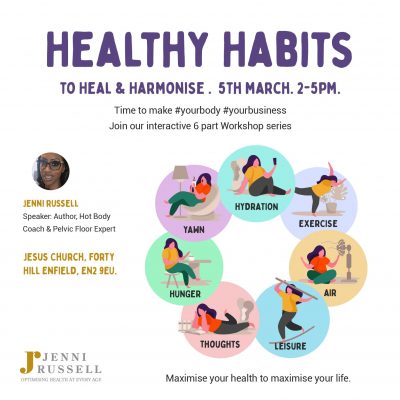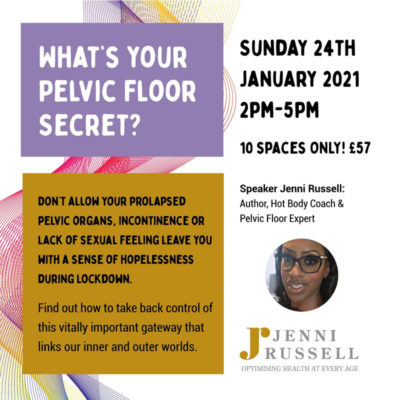BLOG
Jenni Russell’s latest news and information
Pelvic Floor SOS
The statement ‘knowledge is power’ is very poignant when it comes to our pelvic floor muscles. The subject around the vaginal mesh tape was discussed in the Commons last week as Victoria Derbyshire raised awareness of the sufferings of many women and it continued to be discussed on the radio throughout the day.
However, many presenters separated the subject of the mesh from the pelvic floor and this was incorrect. It is a weakness within the muscles (from a number of factors) that allow the organs to prolapse and then it is the lack of information or belief that these functional conditions for most need a medical solution.
Pelvic floor muscle knowledge care and exercise is only usually considered after the fact. After childbirth where it is believed is the only time they become relevant which is so far from the truth. Their importance is underplayed, their value under-rated yet the cost of their debilitation, which is Quality of Life: relationships, freedom of movement, sexual function, continence and confidence. It can literally turn life upside down.
The issue is the pelvic floor has primary everyday functional roles, which govern the way we look, feel and move. If these roles were better understood then care and management would help to save women and men from many of the debilitations outside of injury to the area or neurological disturbance.
There are five primary roles of the pelvic floor muscles:
- Support of the internal organs not just the reproductive ones that “sit” on it
- Provide continence (urine and faecal)
- Assist in stabilising the pelvis and spine
- Gait (the way we walk), movement ability, sports performance and injury prevention
- Play an important role in body shape and confidence
And then there are three secondary roles from adulthood:
- Sexual feeling and function
- Support and stability in pregnancy
- Guiding the babies head and bracing during the 2nd stage of delivery
They don’t only come to life for sex and babies. The subject needs and fits perfectly into schools: Anatomy and Physiology, PHSE, Healthy Living. It’s more than just kegels, it knowing which muscles make up the ‘core’ and what affects them – especially understanding their relationship with stress, emotions and lifestyle habits. This would better prepare individuals as they mature and move into relationships and have their own families.
The Janda Approach back as far as the 1930s states the pelvic floor is the cornerstone of stability for the rest of the body – weakness here has been linked to low back pain, knee and ankle sprains, ACL tears and hamstring injuries. Many high profile sports professionals suffer these regularly, have medical intervention and still suffer recurrent injury. Until the primary role of the pelvic floor muscles becomes part our mainstream education we will continue to struggle to avoid much of the debilitation that is wrecking lives and relationships up and down the country. If you want to change the outcome you have to change the education and the approach.







